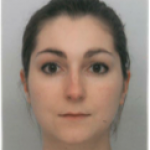Lien vers Pubmed [PMID] – 25532787
Ann. N. Y. Acad. Sci. 2014 Dec;1334:1-25
All living organisms depend on homeostasis, the complex set of interacting metabolic chemical reactions for maintaining life and well-being. This is no less true for psychiatric well-being than for physical well-being. Indeed, a focus on homeostasis forces us to see how inextricably linked mental and physical well-being are. This paper focuses on these linkages. In particular, it addresses the ways in which understanding of disturbed homeostasis may aid in creating classes of patients with mood and anxiety disorders based on such phenotypes. At the cellular level, we may be able to compensate for the inability to study living brain tissue through the study of homeostatic mechanisms in fibroblasts, pluripotent human cells, and mitochondria and determine how homeostasis is disturbed at the level of these peripheral tissues through exogenous stress. We also emphasize the remarkable opportunities for enhancing knowledge in this area that are offered by advances in technology. The study of human behavior, especially when combined with our greatly improved capacity to study unique but isolated populations, offers particularly clear windows into the relationships among genetic, environmental, and behavioral contributions to homeostasis.


